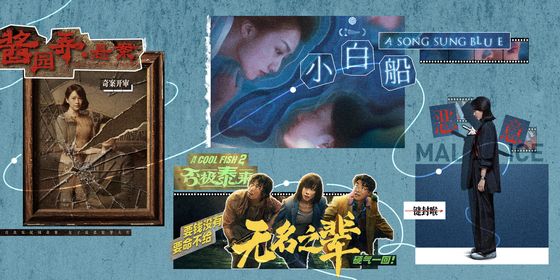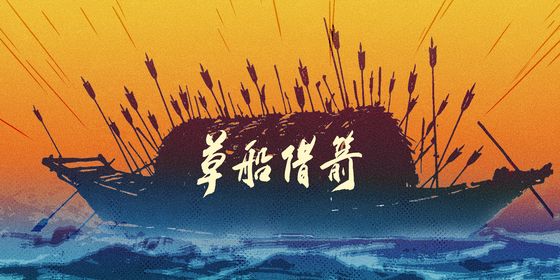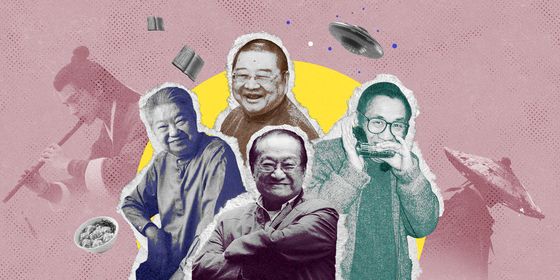Silk and its long history in the city of Hangzhou
On your way out of the Hangzhou Railway Station, you will see a slogan: “Travel all the way to Hangzhou, half for the West Lake, half for the silk.” If you go to Hangzhou and don’t come back with silk of some sort, your spouse has every right to be angry with you.
Having been one of the major hubs for silk production for centuries, silk runs through the lifeblood of Hangzhou, and you can find a place to buy it on every street corner. Perhaps more important for shoppers is being able to tell the difference between the more than 14 different types of silk. For instance, chou (绸) is your most common silk; thin and soft, it’s often made into dresses, blouses, or night gowns. Duan (缎) is a little bit thicker. It’s smooth if you stroke it from the right direction, and this is because during weaving, one of the crossed threads is always on top. Duan is often brocaded and made into an autumn or winter qipao.
The most famous, though, is hangluo (杭罗). Using pure silkworm thread and woven in an extremely complex pattern, the fabric is famed for being light and breathable, perfect for a summer qipao.
Luo silk history can be traced all the way back to the Spring and Autumn Period. In the Three Kingdoms Period (220 – 280) , today’s Hangzhou area belonged to the Wu Kingdom, whose first lady, Madam Zhao, was famous for her luo-weaving skills. “[She] wove luo month after month, and tailored it into curtains; seen from both sides, it floats like smoke and keeps the room cool,” Wang Jia wrote in the fourth century Collection of Anecdotes. When it came to the Southern Song Dynasty, Lin’an fashion dictated that ladies would wear full-length dresses, mostly made of luo silk, coining the term luoqun (罗裙), or “luo dress”. Long gowns with loose sleeves made of luo were equally popular with the gentlemen of the age.

The Fuxing Hangluo brand still uses traditional weaving methods
Until recent history, hangluo was reserved for the rich and powerful—1930s Shanghai tycoons needed at least a few white hangluo gowns in their closets to even be considered well-dressed. The ancient technique of making hangluo was recognized as UNESCO Intangible World Cultural Heritage in 2009, and if you’re looking to take home a bit of this culture, keep an eye out for the brand Fuxing Hangluo (福兴杭罗), produced by Fuxing Silk Factory, which has always strived to hold on to traditional methods.
Origin of Silk
Legends attribute the invention of silk to Leizu (嫘祖), the empress of the Yellow Emperor, a legendary sovereign. It was said that when Leizu was drinking a cup of tea, a silkworm cocoon fell into her cup. Then, because of the heat, a fine thread started to separate itself from the silkworm cocoon, and Leizu found that she could unwind this soft thread around her finger. She persuaded her husband to give her a grove of mulberry trees, where she could domesticate the worms and harvest their cocoons.
Silk dyeing has been an important facet of silk production for millennia. In describing the process of making a luxurious silk dress for a lady of the court, Tang Dynasty poet Bai Juyi wrote in his poem “Liao Ling” (《缭绫》), “[The woven silk fabric] resembles a 15-meter waterfall under the moonlight…[They] embroidered the wild geese pattern over the clouds and dyed it the color of the southern spring river.” The former Hangzhou Silk Printing and Dyeing Factory, now known as Xidebao (喜得宝), is a renowned silk brand specializing in hand-dyeing silk.

The Xidebao factory specializes in painting and dyeing silk
But, if you’re looking for decoration rather than fashion, the local zhijin (织锦), or brocade, will definitely satisfy. Named after the patriotic textile businessman Du Jinsheng (都锦生) active in the 1920s to 30s, this silk brocade is a relatively modern take on textile design. Drawing inspiration from the beautiful natural scenery around Hangzhou, native-born Du invented the art of landscape “painting” on silk, and hand-woven the first of its kind based on the local attraction, Nine Brooks and 18 Streams. Today you can find the original in the Former Residence of Du Jinsheng (都锦生故居), which is a museum for such designs in Maojiabu Village (茅家埠) by the western shore of the West Lake. From a family mill with one worker to factories around the city and stores across the nation, Du took the silk industry by storm. In 1926, their brocade even won the gold prize at the Philadelphia World Expo.
As far as where to go, you can find everything you need in China Silk Town (中国丝绸城), the biggest silk wholesale and retail market in the country, with more than 600 silk enterprises dealing in a wide variety of pure silk fabrics, garments, handicraft articles, scarves, and ties. On Hefang Street, one of the most famous historic streets in the city, you will find brand names like Silk Depot (丝瑞宝) and many other independent shops full of innovative silk souvenirs and handicrafts. Of course, you can also just go to department stores like the Hangzhou Department Store (杭州百货大楼) for guaranteed quality.
Excerpt taken from Hangzhou At A Glance by TWOC. You can pick up a copy from our store or grab the digital version on our China Dispatch app. Go get your copy now.













